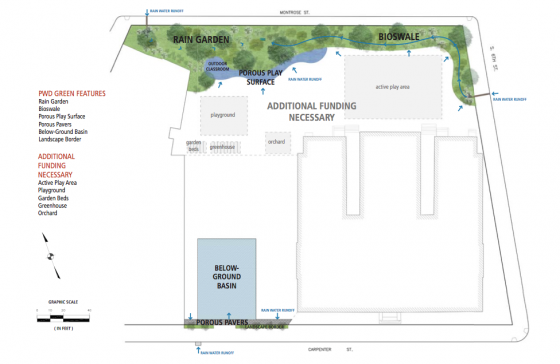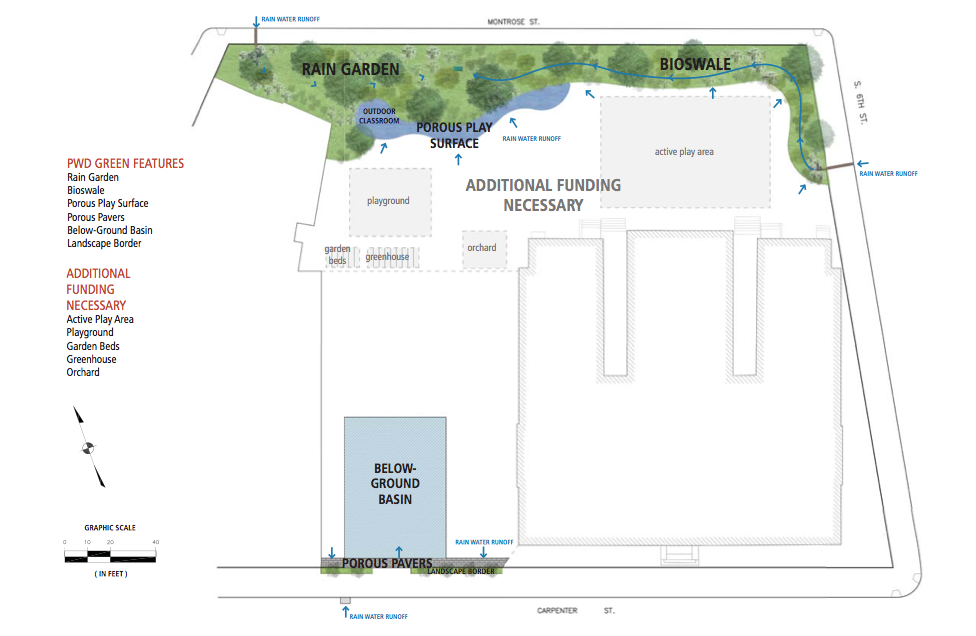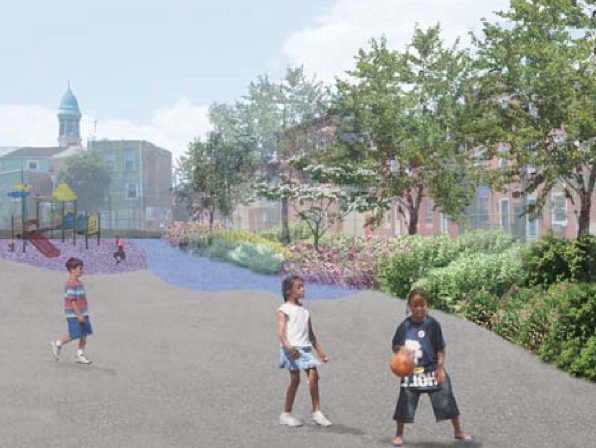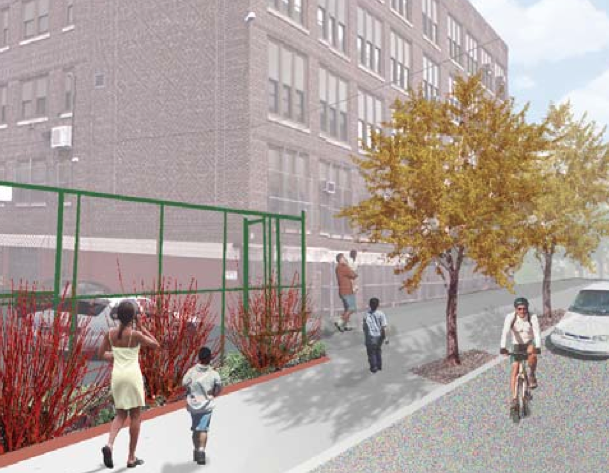In Queen Village, current construction will transform the Nebinger School into a citywide model for stormwater management improvements at Philadelphia public schools.
“Nebinger is unique in that it’s essentially a model,” said Tiffany Ledesma Groll of the Philadelphia Water Department.
Improvements to the school are planned to be completed by the start of next school year. A stormwater management inter-disciplinary curriculum was also developed over the past year between PWD and Nebinger staff. Imagine students doing math word problems based on local stormwater information. They’ll also learn about the social impact in addition to environmental and science-related lessons. Friends of Nebinger and the Queen Village Neighbors Association also played a part in realizing this opportunity.
The construction will be focused mostly along Montrose Street between 5th and 6th Streets where a rain garden, porous play surface and a landscape border will be fabricated. Porous pavers will also be installed along Carpenter Street, next to a below-ground basin currently being dug. The project is a result of a collaboration between the Philadelphia Water Department (PWD), EPA and the Partnership for the Delaware Estuary (PDE). It was conceptual plans developed a few years ago by the community via the Community Design Collaborative that enabled this plan to be chosen. Because there was already a stormwater management improvement plan, the PWD was able to take that plan and tweak it a bit to ensure the “site gets as much stormwater management as possible.”
While this is separate from the plans to improve and green the Nebinger playground itself, according to Groll, the stormwater management improvements will be fabricated with that project in mind. Th collaboration also represents an extension of the Joint Initiative on Urban Sustainability (JIUS), a partnership among the US EPA, Brazil’s Ministry of Foreign Affairs, the City of Rio de Janeiro, and the City of Philadelphia, which was formed to advance sustainable cities. A $278K EPA grant received by PDE is responsible for this project, according to Groll. She added the PWD will take what it learns from this situation and apply it to other schools it decides to green as part of its Green City Clean Waters campaign to improve the City’s stormwater management infrastructure.
This project is a great example of both civic collaboration and how the Community Design Collaborative’s conceptual plans are transformed from Power Point presentations to realities.
–Lou Mancinelli






